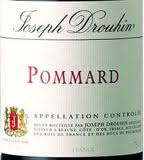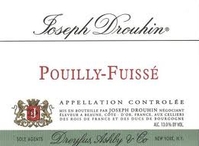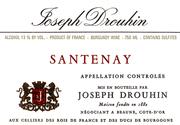Once upon a time, Burgundy was the wine aficionados reached for when they visited their favorite wine merchant. Back in the day, very few grocery stores could legally sell wine, so there really were honest-to-goodness wine merchants.
It was a time when French wine ruled the retail shops, and Burgundy was considered pure poetry by those who fancied themselves in the know. Then California happened, followed by Australia. New Zealand wines were sizzling for a while, and now it’s Spain and Argentina. Everyone seems to be looking for the best new thing.
 But here’s a flash. Burgundy is back, thanks largely to consecutive vintages — 2009 and 2010 — that are not only very good, but also not as expensive as you might imagine given the weakness of the dollar. The Burgundies of 2009 are just now hitting the stores.
But here’s a flash. Burgundy is back, thanks largely to consecutive vintages — 2009 and 2010 — that are not only very good, but also not as expensive as you might imagine given the weakness of the dollar. The Burgundies of 2009 are just now hitting the stores.
The problem — and it’s the only problem — is that the new wine consumer barely knows that Burgundy is the home of pinot noir and chardonnay, let alone the esoteric classifications that serve as the guide to quality and price.
So it seems that with these two outstanding vintages just beginning to be commercially available, a few basic observations on Burgundy might be in order.
CLASSIFICATIONS
Grand cru is the top tier of wine in Burgundy. Grand cru wines come from the best vineyards in the top villages. They are rare and expensive, even in vintages that are not as highly regarded as 2009 and 2010. The next level down is premier cru. From a good producer in an outstanding year these wines are almost always superb, if not downright spectacular. In fact, a handful of premier cru vineyards are consistently on par with nearby grand cru vineyards and probably should be upgraded, but that will never happen because of the nature of the political landscape.
The next level is the village wine. These wines come from vineyards that surround specific villages, and thus take the village name. Many of Burgundy’s best and most enlightened producers often blend grapes from their premier cru vineyards into their village wines to improve the quality, which makes village wine perhaps the best value in Burgundy, particularly in good vintages.
 The most basic level of Burgundy is Bourgogne, which can be a blend of grapes from anywhere in the region. Most Bourgogne is inexpensive and generally regarded as the entry-level Burgundy for those who need an introduction to the earthy qualities that distinguish Burgundy from many New World pinot noirs and chardonnays.
The most basic level of Burgundy is Bourgogne, which can be a blend of grapes from anywhere in the region. Most Bourgogne is inexpensive and generally regarded as the entry-level Burgundy for those who need an introduction to the earthy qualities that distinguish Burgundy from many New World pinot noirs and chardonnays.
REGIONS
Burgundy is vast and diverse, with a hierarchy that is based on place. Chablis is the northernmost district, about an hour south of Paris, and produces a flinty, minerally white wine that is renowned for the absence of oak in the production of the region’s wines. That is slowly changing, although oaked Chablis is primarily the domain of Chablis from grand cru vineyards. The Cote d’or is the most important corridor in Burgundy. It runs north-south and encompasses what are considered Burgundy’s two most influential districts, the Cote de Nuits and Cote de Beaune. Generally speaking, the Cote de Nuits is most famous for red and Cote de Beaune most famous for whites, though the Cote de Beaune does boast a couple of villages — Volnay and Pommard — that are quite famous for red wine.
The reds and whites from the Cote Chalonnaise and the whites from Maconnais, both regions south of Beaune, produce solid wines that are reliably good, of not necessarily on par with the wines of the Cote d’Or.
Still further south, not far from Lyon, lies Beaujolais, where the grape is gamay rather than pinot noir, and the wines are lighter and fruitier, meant to be consumed relatively young and fresh.
BUYING STRATEGY
In good vintages, the premier cru and village wines of Burgundy offer ordinary folk an opportunity to purchase cellar-worthy Burgundy at modest prices.
 These wines age remarkably well and improve as the firm acids and hard tannins that are typical of young red Burgundy soften over time. White Burgundy tends to flesh out and gain palate weight as it ages, developing intriguing flavor complexity along the way.
These wines age remarkably well and improve as the firm acids and hard tannins that are typical of young red Burgundy soften over time. White Burgundy tends to flesh out and gain palate weight as it ages, developing intriguing flavor complexity along the way.
I wouldn’t hesitate to purchase village wines from the 2009 and 2010 vintages of Burgundy. They will be good to drink young and should be fairly sensational upon reaching maturity. This is where the value is. That said, many of the premier cru reds, which I tasted extensively at the Hospices de Beaune in November 2010, are impressive wines that are certainly collector or special occasion worthy.
There will be values at the premier cru level as well because, frankly, the strongest global demand for Burgundy is in the high-dollar-value grand cru wines, which get sucked up by rich collectors, Michelin-grade restaurants and the ever voracious Asian market.
To get you started, on the WRO Reviews page I’ve recommended a few village wines from Joseph Drouhin, a top Burgundy negociant. They are the best evidence I can present that Burgundy is not only back, but at a fair price, too.
8
